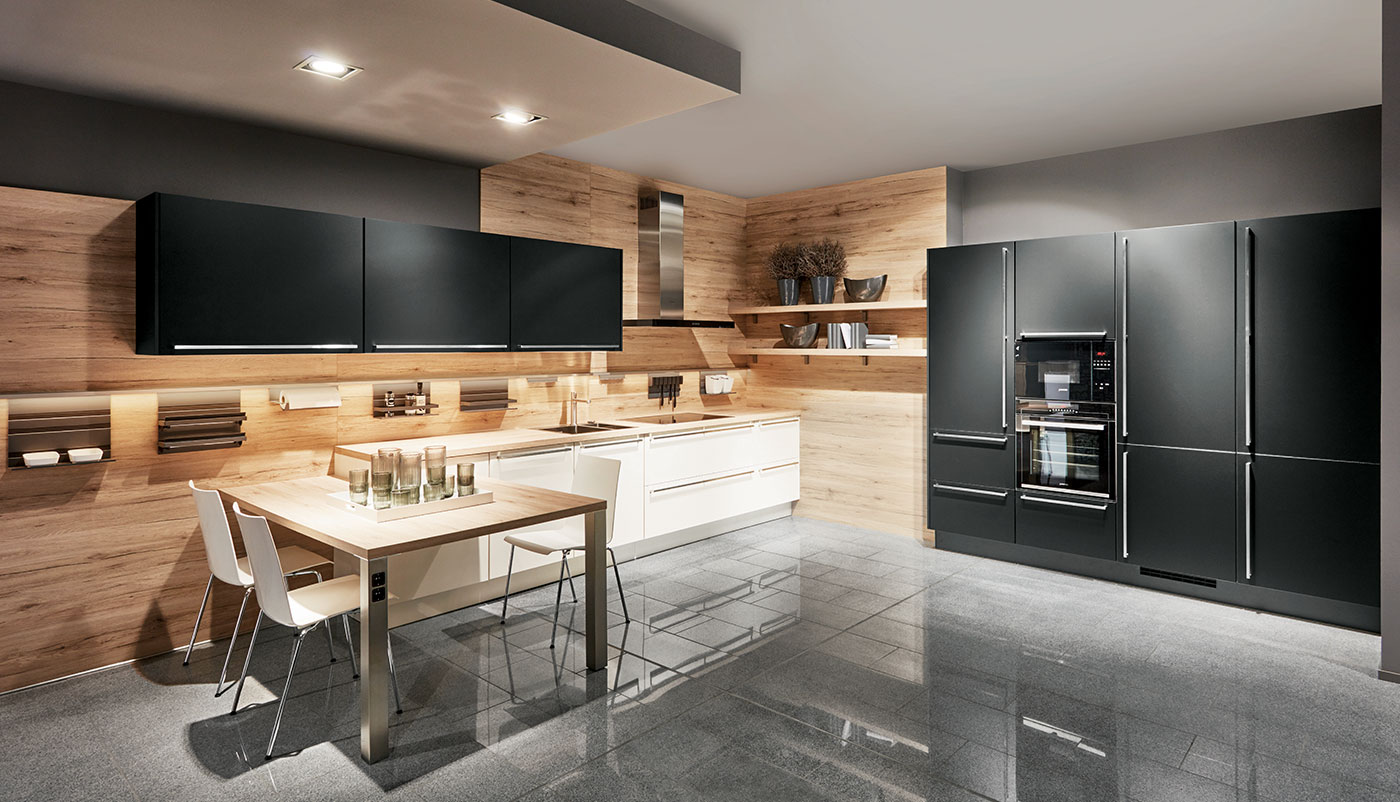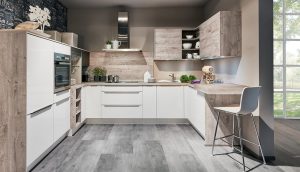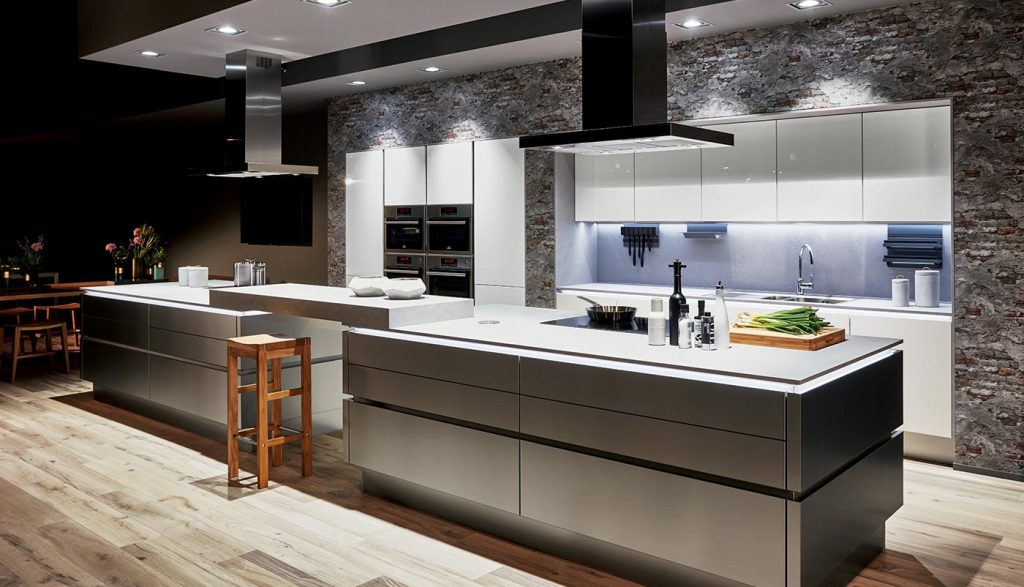
What is the activity triangle in a kitchen
The triangle of activities is the basic principle to know when designing your kitchen. The name may sound strange. But in fact, it’s just a rule of thumb for arranging your space. Whether it’s large or small, you’ll have an efficient and effective kitchen where you feel good.
The three zones of the activity triangle
 The activity triangle groups the three main areas of your kitchen: the cooking area, the washing area and the food storage area. These three areas should be located at roughly equal distances from each other, forming an imaginary triangle. In this way, unnecessary walking back and forth and time wasting can be kept to a minimum.
The activity triangle groups the three main areas of your kitchen: the cooking area, the washing area and the food storage area. These three areas should be located at roughly equal distances from each other, forming an imaginary triangle. In this way, unnecessary walking back and forth and time wasting can be kept to a minimum.
A kitchen can have different configurations: L-shaped, U-shaped, I-shaped… Whatever its shape, it is important to respect the principle of the activity triangle when designing or renovating it.
The cooking area, first pole of the activity triangle
The cooking area contains the cooking hobs and the oven. This is where meals are prepared, so they are often placed in the centre of the kitchen. The oven is traditionally located underneath the hob, but increasingly it is being built in high up, so that you can watch the cooking process without having to bend down. In this cooking area, it is useful to provide storage for pots and pans within easy reach, to facilitate the preparation of the meal.
The washing area of the activity triangle
The washing area contains the sink and the dishwasher. They are used in a complementary way, which is why they are placed close to each other. Ideally, the rubbish bin should also be placed in this area so that the rubbish can be emptied before washing the dishes. An important rule is that the sink should not be placed in a corner of the room, but at least 40 cm from a wall.
The cold or food storage area
The third part of the triangle of activity is the storage area, which primarily contains the refrigerator/freezer. However, if the kitchen is large enough, it is ideal to also include storage space for dry foodstuffs in this area. This way you can quickly put away your groceries and have all the necessary products close by when preparing meals. Cupboards and drawers should be easily accessible.
The right distance between the poles of the activity triangle
The advantage of the activity triangle is that the kitchen elements are well positioned in relation to each other. This creates an ergonomic and practical space. To achieve this, it is important to remember to keep sufficient distance between the different areas. Experts recommend a minimum distance of 90 cm between each of the three areas, or even 120 cm in the case of a large family. It is also important to keep a sufficient distance from the dining area so as not to impede the movement of people. If you allow 90 cm around the chairs, you can be sure that you will be able to live comfortably in your kitchen and make it a beautiful and welcoming living space.



